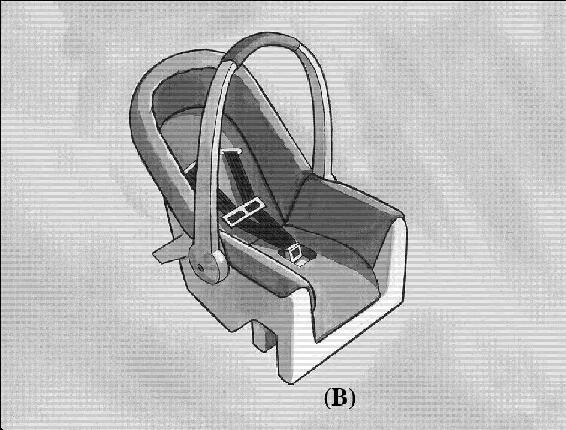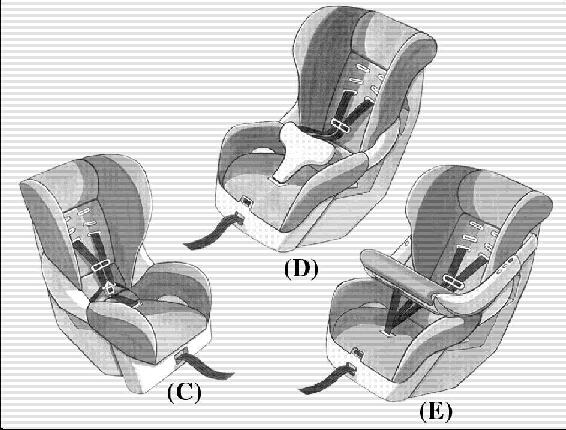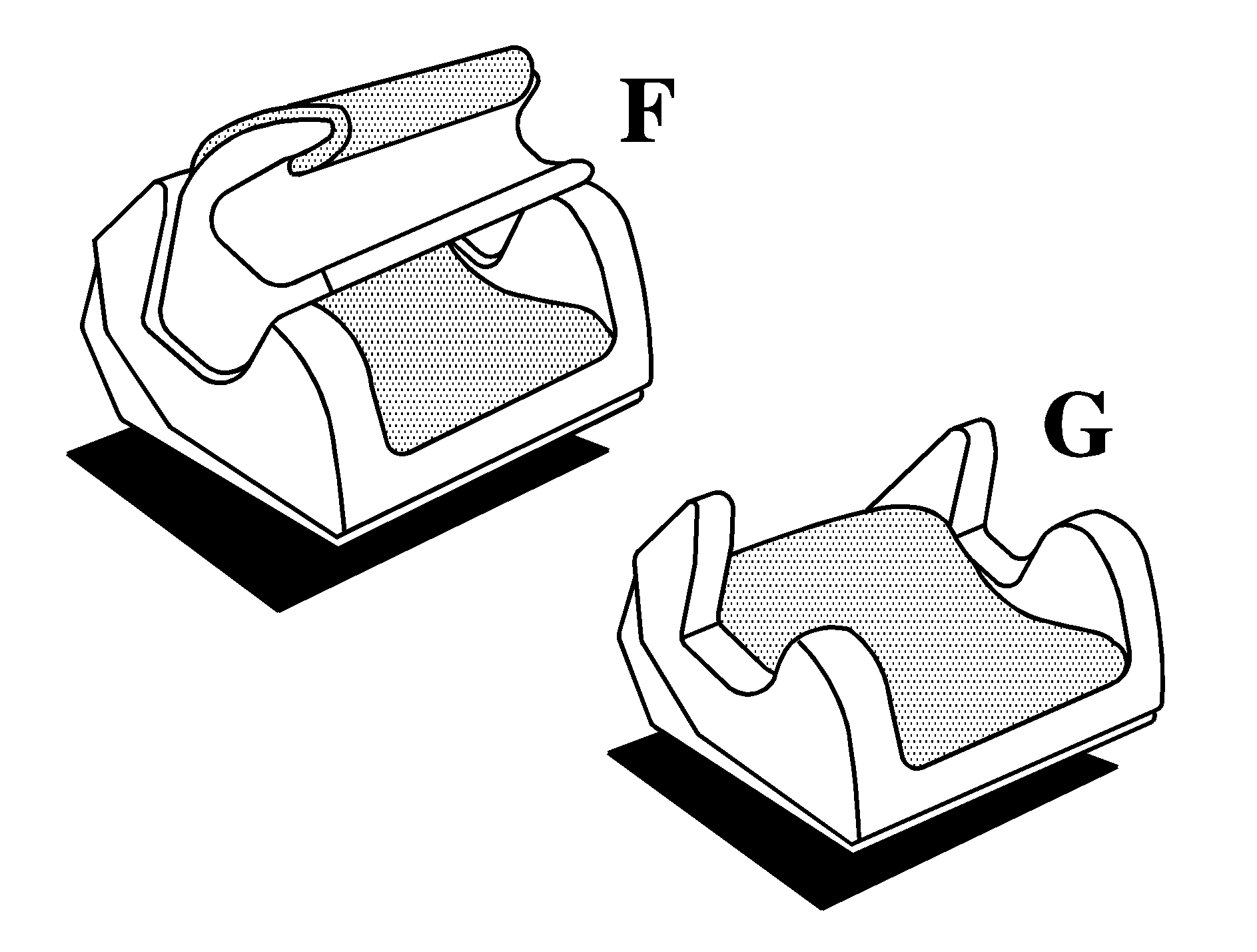Every time infants and your children ride in vehicles, they should have protection provided by appropriate restraints.
Question:
What are the different types of add-on child restraints?
Answer:
Add-on child restraints are available in four basic types. When selecting a child restraint, take into consideration not only the child's weight and size, but also whether or not the restraint will be compatible with the motor vehicle in which it will be used.

An infant car bed (A), a special bed made for use in a motor vehicle, is an infant restraint system designed to restrain or position a child on a continuous flat surface. Make sure that the infant's head rests toward the center of the vehicle.

A rear-facing infant restraint (B) positions an infant to the rear of the vehicle. Rear facing infant restraints are designed for infants of up to about 20 lbs (9 kg) and about one year of age. This type of restraint faces the rear so that the infant's head, neck, and body can have the support they need in a frontal crash. Some infant seats come in two parts -- the base stays secured in the vehicle and the seat part is removable.

A forward-facing child restraint (C-E) positions a child upright to face forward in the vehicle. These forward-facing restraints are designed to help protect children who are from 20 to 40 lbs (9 to 18 KG) and about 26 to 40 inches (66 to 102 cm) in height, or up to around four years of age. One type, a convertible restraint, is designed to be used either as a rear-facing infant seat or a forward-facing child seat.

A booster seat (F-G) is a child restraint designed for children who are about 40 to 60 lbs (18 to 27 kg) or even up to 80 lbs (36 kg) and about four to eight years of age. It's designed to improve the fit of the vehicle's safety system.
Booster seats with shields use lap-only belts; however, booster seats without shields use lap-shoulder belts. Booster seats can also help a child to see out the window.
When choosing a child restraint, be sure the child restraint is designed to be used in a vehicle. If it is, it will have a label saying that it Meets Federal Motor Vehicle Safety Standards.
Then, follow the instructions for the restraint. You may find these instructions on the restraint itself or in a booklet, or both. These restraints use the belt system in your vehicle, but the child also has to be secured within the restraint to help reduce the chance of personal injury. When securing an add-on child restraint, refer to the instructions that come with the restraint which may be on the restraint itself or in a booklet, or both, and to this manual. The child restraint instructions are important, so if they are not available, obtain a replacement copy from the manufacturer.
